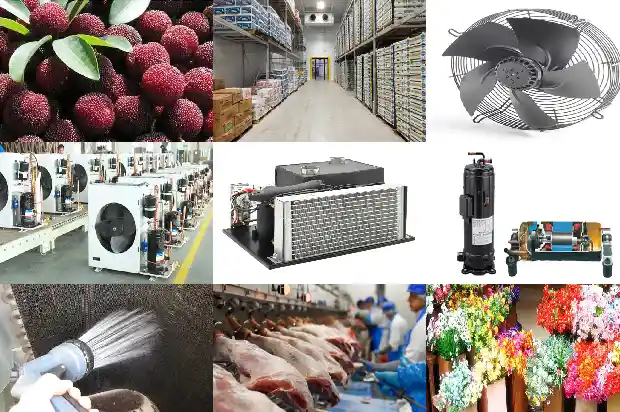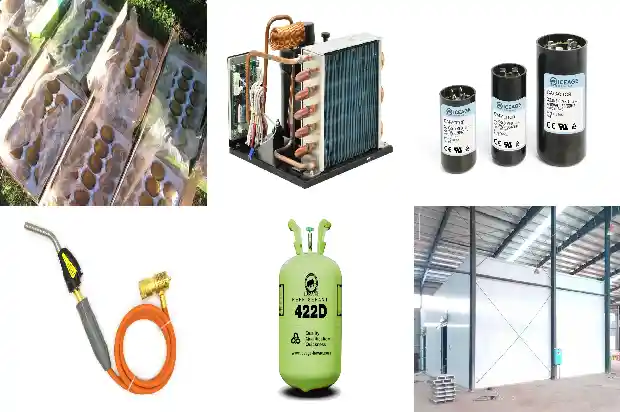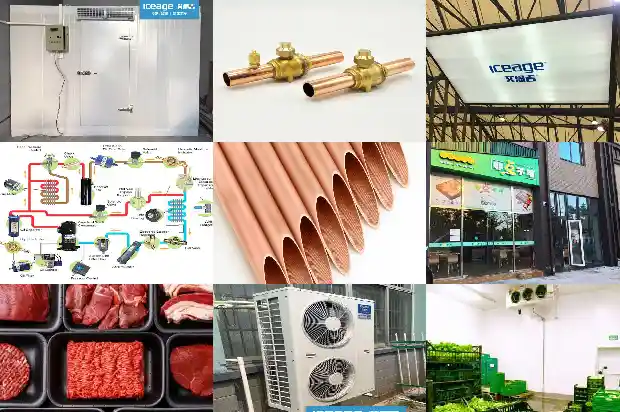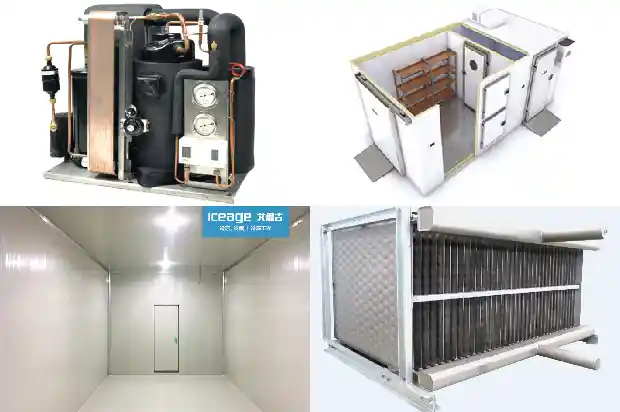Characteristics and Differences among Water System, Air System and Refrigerant System
2025-01-14
Domestic central air - conditioning is an air - conditioner that uses a main unit to control different rooms through air supply via air ducts or cold and hot water pipes, and copper pipes connect multiple terminals (indoor units) to achieve indoor air conditioning purposes.
System Classification
Currently, there are three major main types:
One is the water system represented by China;
The second is the air - duct system represented by Europe and the United States;
The third is the refrigerant system represented by Japan.
Products of these three styles all have their different characteristics and advantages, and can meet the needs of different consumers.
Currently, there are three major main types:
One is the water system represented by China;
The second is the air - duct system represented by Europe and the United States;
The third is the refrigerant system represented by Japan.
Products of these three styles all have their different characteristics and advantages, and can meet the needs of different consumers.
Water System:
The outdoor unit is generally called a cold and hot water unit, and the indoor unit is generally called a fan - coil unit. The indoor and outdoor units are connected through water pipes.
(Water system diagram)
The outdoor unit is generally called a cold and hot water unit, and the indoor unit is generally called a fan - coil unit. The indoor and outdoor units are connected through water pipes.

(Water system diagram)
Air - duct System:
The outdoor unit is connected to an air - duct - type indoor unit through a refrigerant pipe. The air - duct - type indoor unit uniformly processes the indoor air, and then sends the processed air into each room through the air duct.
(Air - duct system diagram)
The outdoor unit is connected to an air - duct - type indoor unit through a refrigerant pipe. The air - duct - type indoor unit uniformly processes the indoor air, and then sends the processed air into each room through the air duct.

(Air - duct system diagram)
Refrigerant System:
The outdoor unit is connected to multiple indoor units through refrigerant pipes. The indoor unit in each room is for direct heat exchange between the refrigerant and the air.
(Air - duct system diagram)
The outdoor unit is connected to multiple indoor units through refrigerant pipes. The indoor unit in each room is for direct heat exchange between the refrigerant and the air.
(Air - duct system diagram)
System Characteristics, Advantages and Disadvantages
Water System
Advantages:
High comfort level, and each room can be controlled separately.
Disadvantages:
Advantages:
High comfort level, and each room can be controlled separately.
Disadvantages:
- Troublesome maintenance: There are many auxiliary components, which increases the system failure rate. If not maintained in time, the heat - exchange efficiency will decrease, and the operating cost will rise significantly.
- Difficult installation: There are great installation hidden dangers.
There are many installation components, and water leakage is likely to occur, which may damage the decoration.
- Low heat - exchange efficiency: High operating cost and high electricity consumption.
The water - system domestic central air - conditioning is a mini - version of large - scale central air - conditioning. It uses water to adjust the temperature, adopts the air - supply method of small temperature difference and large air volume. The air supply is softer, and it can also make the indoor temperature and humidity evenly distributed.
The same comfort can be felt in any corner of the room. However, it requires daily maintenance. It is impossible for a family to send someone to maintain the air - conditioning system like in commercial places. Therefore, its current market share in the residential market is less than 10%.
Air - duct System
Advantages: Relatively low initial investment.
Disadvantages:
Advantages: Relatively low initial investment.
Disadvantages:
- High noise: It is likely to cause a feeling of restlessness.
- Each room cannot be controlled separately: High operating cost. People have individual differences in temperature sensitivity, which cannot be met.
- Low heat - exchange efficiency: The air - duct layout is not flexible. It may require full - ceiling installation, creating a feeling of oppression. It requires a relatively high floor height and is not easy to match with the decoration.
The air - duct system originated in the United States. Even now, its usage rate is relatively high. The United States is an energy - rich country with cheap electricity, and the public has no awareness of energy conservation. However, China is in a period of rapid economic development, with a shortage of electricity and relatively high electricity prices. Therefore, this system is not suitable for use in China. Currently, its market share in the residential market is also less than 10%. It is suitable for commercial places such as supermarkets and cafes.
Refrigerant System
Advantages:
Each room can be controlled separately. It is a DC variable - speed refrigerant system. The outdoor unit can adjust the rotation speed according to different indoor loads, which saves energy and electricity. It can meet the individual differences in people's temperature requirements. It can be freely combined according to the characteristics of the house, with good energy - saving performance and low operating cost.
Disadvantages:
Advantages:
Each room can be controlled separately. It is a DC variable - speed refrigerant system. The outdoor unit can adjust the rotation speed according to different indoor loads, which saves energy and electricity. It can meet the individual differences in people's temperature requirements. It can be freely combined according to the characteristics of the house, with good energy - saving performance and low operating cost.
Disadvantages:
- Relatively expensive initial investment;
- Refrigerant leakage is not easy to detect, so the installation requirements for refrigerant pipes are high;
- A separate fresh - air system is needed to introduce fresh air;
- The control area is limited by the length of the refrigerant pipe;
- The external static pressure of the unit is small, the air - supply distance is short, and multiple indoor units are required for large rooms.
Key Indicators for Evaluating the Quality of Air - conditioners
Cooling (Heating) Capacity:
The amount of heat removed from an enclosed space per unit time when the air - conditioner is in the cooling (heating) operation. The legal unit of measurement is W (watt). The national standard stipulates that the actual cooling capacity of an air - conditioner should not be less than 95% of the rated cooling capacity.
The amount of heat removed from an enclosed space per unit time when the air - conditioner is in the cooling (heating) operation. The legal unit of measurement is W (watt). The national standard stipulates that the actual cooling capacity of an air - conditioner should not be less than 95% of the rated cooling capacity.
Energy Efficiency Ratio:
Also known as the coefficient of performance, it refers to the ratio of the cooling capacity to the cooling power when the air - conditioner is in the cooling operation, with the unit of W/W. The national standard stipulates that the standard value of the energy efficiency ratio of a 2500W air - conditioner is 2.65; for air - conditioners with a capacity of 2500W to 4500W, the standard value of the energy efficiency ratio is 2.70.
Also known as the coefficient of performance, it refers to the ratio of the cooling capacity to the cooling power when the air - conditioner is in the cooling operation, with the unit of W/W. The national standard stipulates that the standard value of the energy efficiency ratio of a 2500W air - conditioner is 2.65; for air - conditioners with a capacity of 2500W to 4500W, the standard value of the energy efficiency ratio is 2.70.
Noise:
The noise generated when the air - conditioner is operating, mainly produced by the internal evaporator and the external condenser. The state stipulates that for air - conditioners with a cooling capacity of less than 2000W, the noise of the indoor unit should not be greater than 45 decibels, and that of the outdoor unit should not be greater than 55 decibels; for split - type air - conditioners with a capacity of 2500W to 4500W, the noise of the indoor unit should not be greater than 48 decibels, and that of the outdoor unit should not be greater than 58 decibels.
The noise generated when the air - conditioner is operating, mainly produced by the internal evaporator and the external condenser. The state stipulates that for air - conditioners with a cooling capacity of less than 2000W, the noise of the indoor unit should not be greater than 45 decibels, and that of the outdoor unit should not be greater than 55 decibels; for split - type air - conditioners with a capacity of 2500W to 4500W, the noise of the indoor unit should not be greater than 48 decibels, and that of the outdoor unit should not be greater than 58 decibels.
Related Articles
- What are the characteristics and application fields of cross-flow fans?
- Characteristics of Mini Cold Storages in Cold Storage Projects
- What are the characteristics of low-temperature cold storage?
- What are the characteristics of the structure of small cold storage?
- Characteristics and principles of air-cooled and water-cooled units
- Freezing Chamber System Blockage, Dirty Blockage, and Oil Blockage Characteristics and Treatment Methods
- Explosion-Proof Refrigerators' Special Characteristics
- The characteristics and uses of 26 types of air conditioning refrigerants
- What Are the Differences Between Chillers and General Water - cooled Equipment?
- What Are the Differences Between R22 and R404A Cold Storage Systems?
- What Are the Differences Between Cold Storage and Freezer?
- Differences Between Steel Structure Cold Storages and Multi-story Civil Engineering Cold Storages
- Temperature Gradient Differences between Deep Foundation and Surface of Civil Cold Storage
- Differences, Requirements and Standards between Pharmaceutical Cold Storage and Conventional Cold Storage
- Basic Faults and Preventive Maintenance of Water - cooled Units
- Three Common Methods for Removing Water Scale from Water - cooled Condensers
- Selection of Bypass Control Valves for Air - conditioning Water Systems
- Operation of Screw - type Water - cooled Chiller Units
